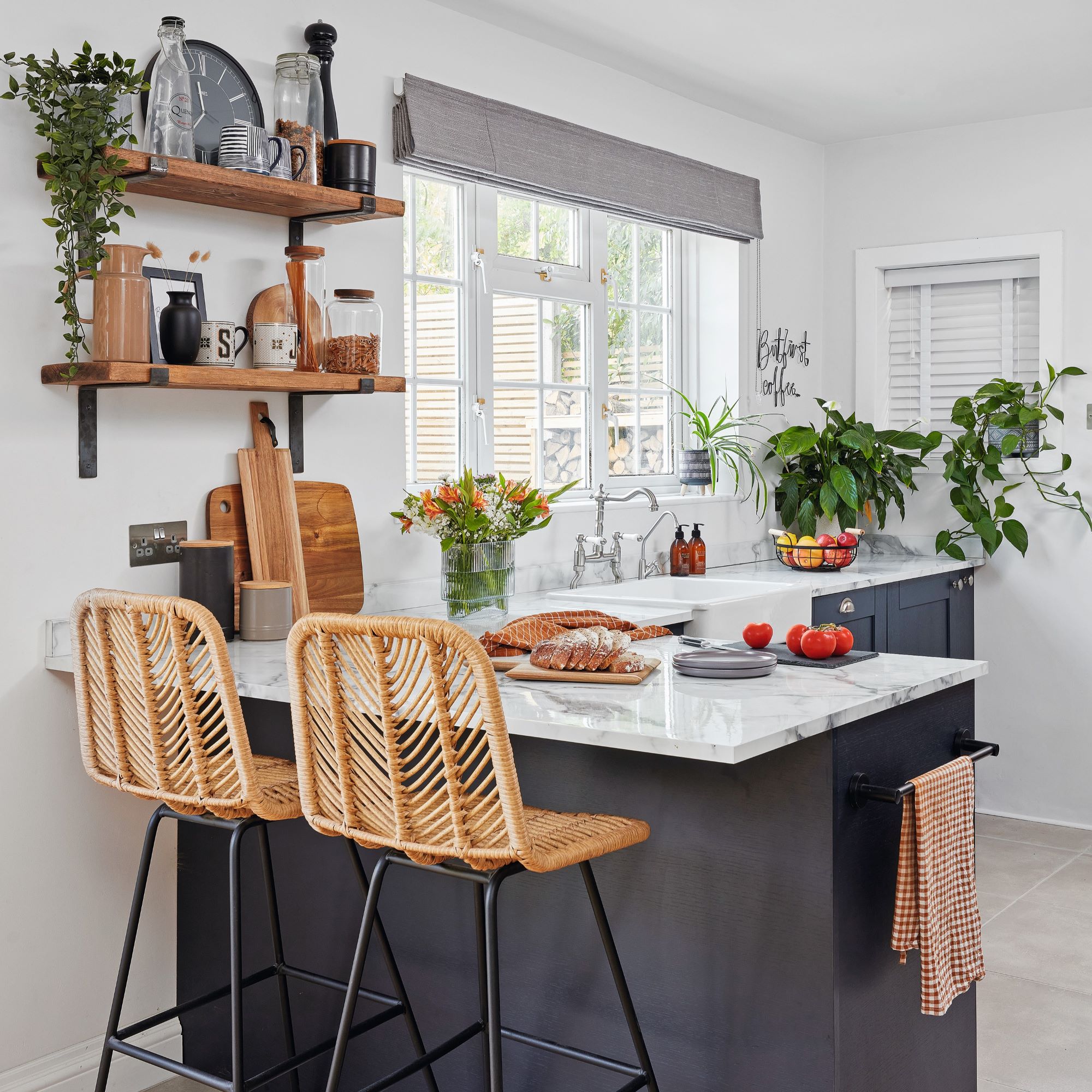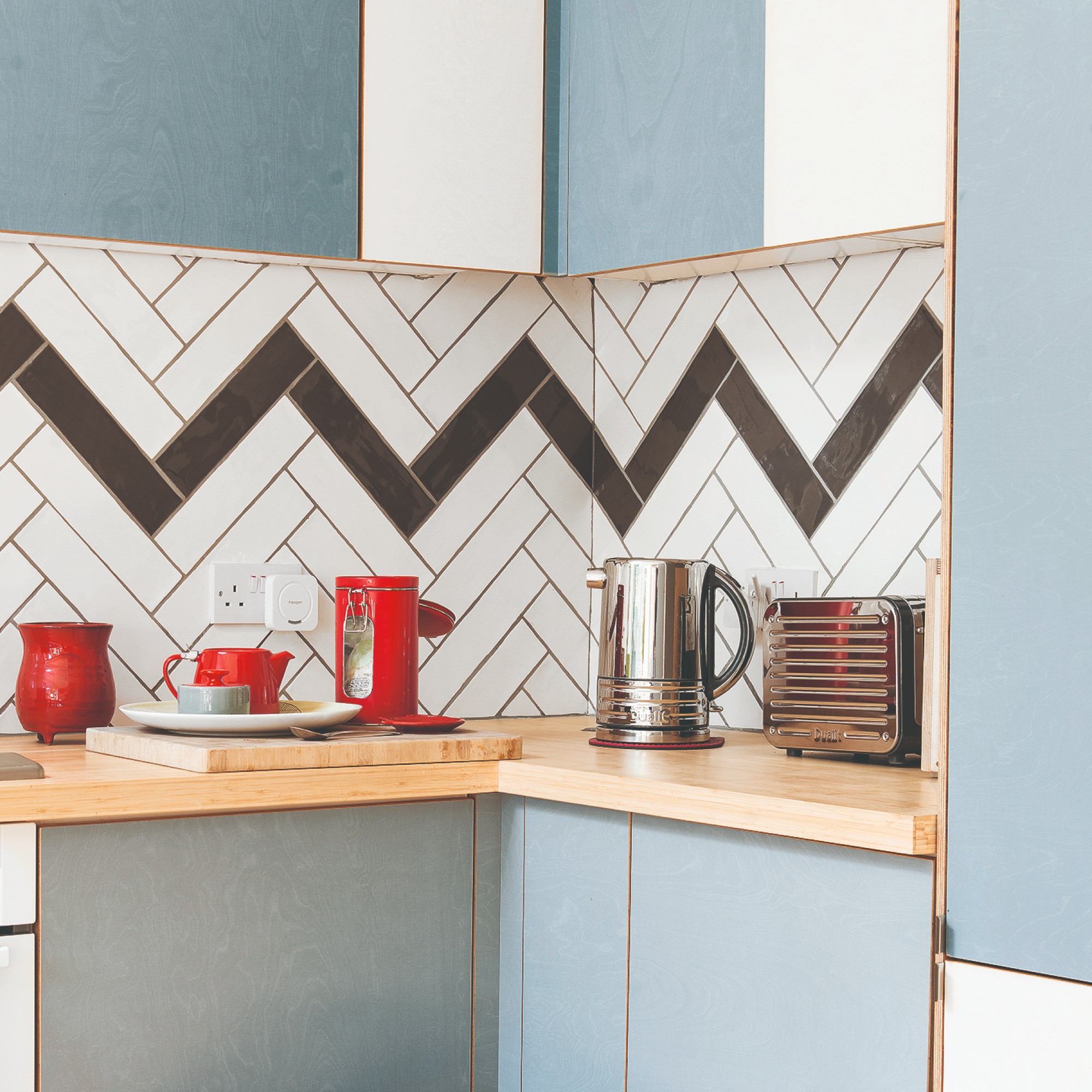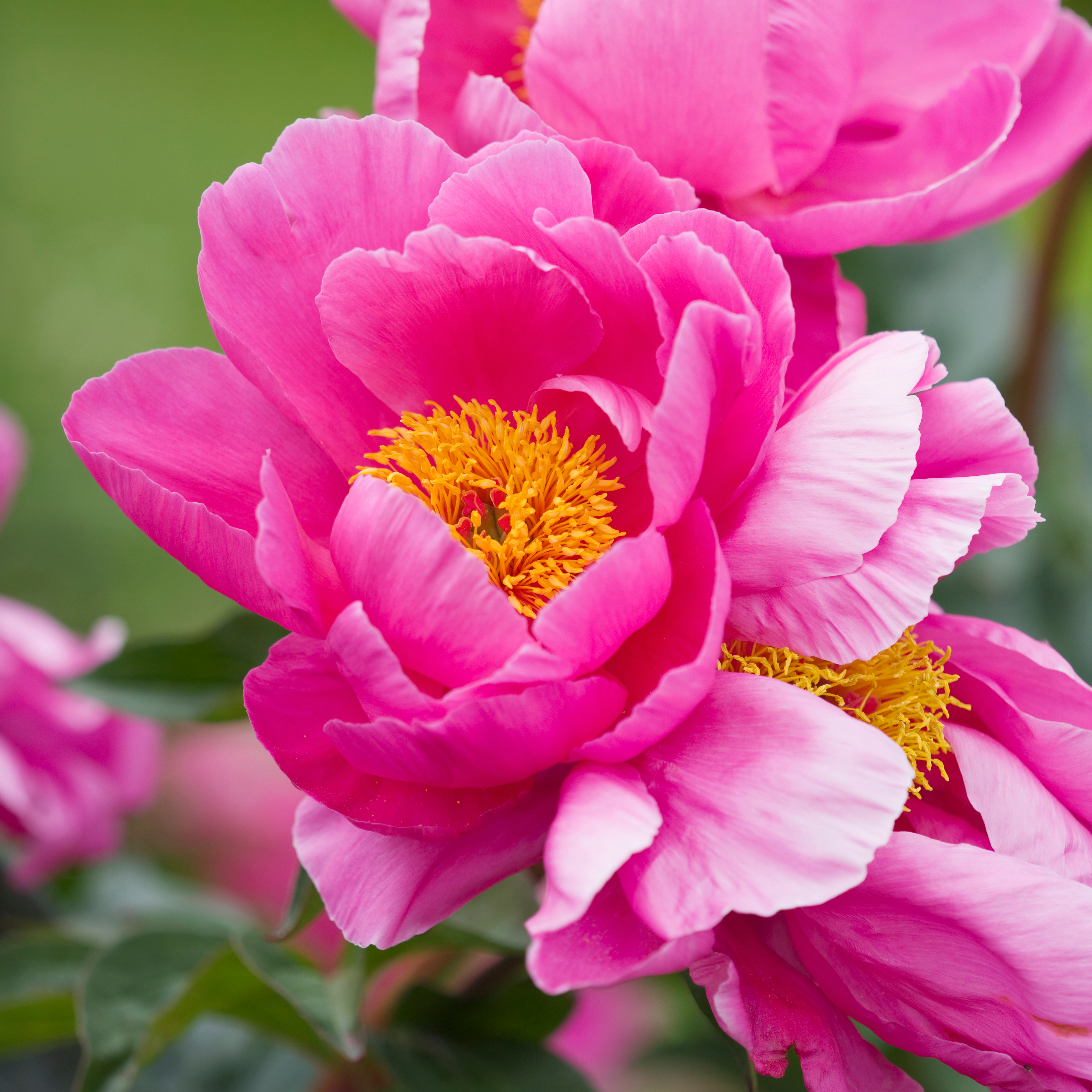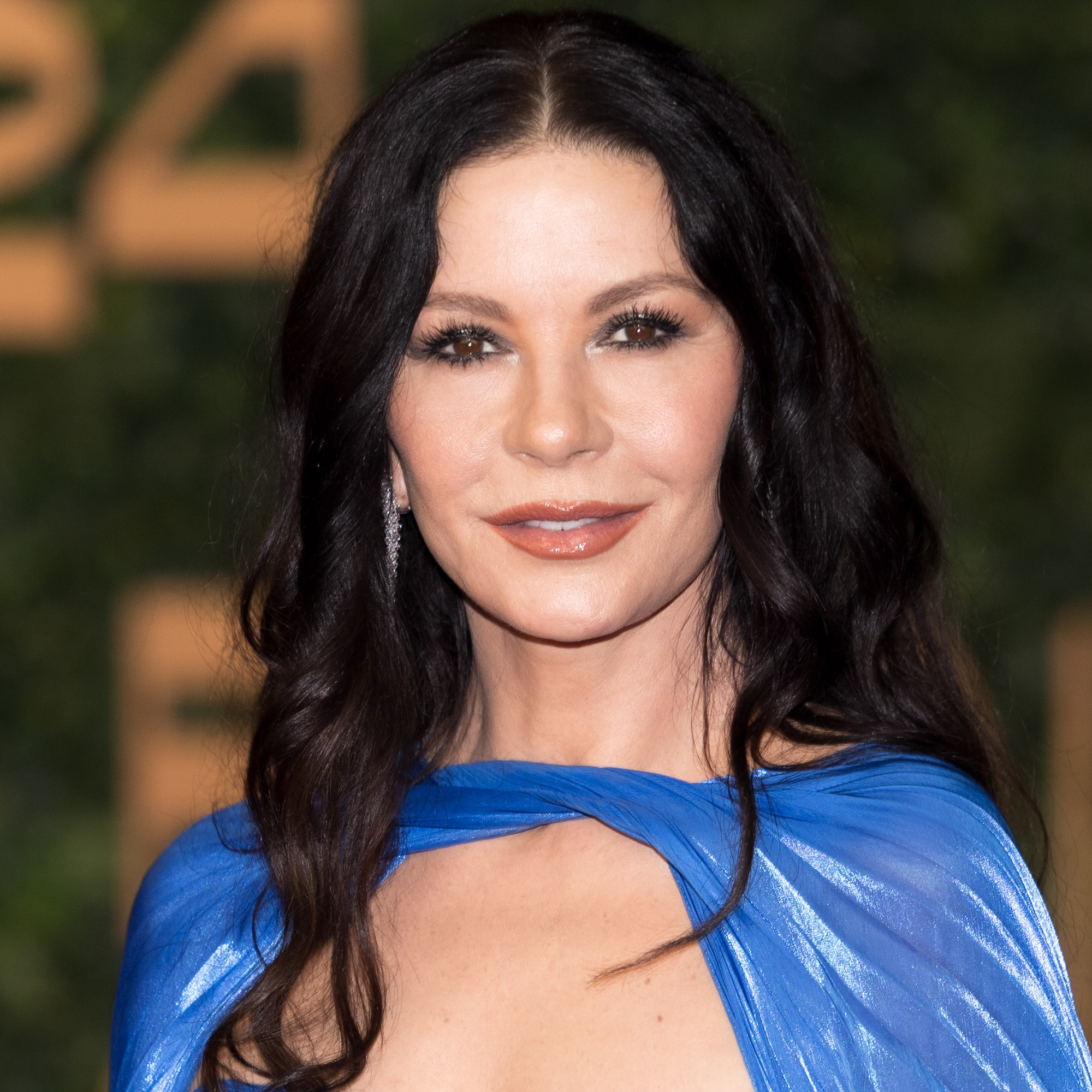6 dirty things professional cleaners notice first in a kitchen — and how you can tackle them in a hurry
Use these tips for a pristine kitchen

Staying on top of everything in a busy household can feel like a constant juggling act. Why is the to-do list always longer than the done list? So, instead of chasing the idea of perfection, which, let’s face it, is impossible, it’s often better to focus on what really matters. The tricky part is figuring out where to start. Just like how we can become nose blind to certain smells, we can also begin to miss the dirt in areas that need our attention most. One place, however, is a clear culprit – the kitchen. It may well be the heart of the home, but it’s often also the messiest.
Evenings can get busy, dinners are regularly cooked in a rush, and before you know it, there’s a sticky residue on the hob, fingerprints on the fridge, and crumbs that have migrated to every corner of the room. Just know that you’re by no means alone, everyone’s kitchen needs serious TLC sometimes.
The trick is knowing exactly where the dirt hides so that you can properly clean your kitchen. That’s where the professionals come in. Pro cleaners need to work efficiently, making every second count to get the best results in the shortest amount of time, and they quickly become adept at spotting the dirt you’d not even noticed and knowing exactly where grime loves to hide. So we’ve enlisted a selection of experts to share the things professional cleaners notice in a kitchen and their quick-fix tips so you can tackle the trouble spots and feel like a pro in no time.
1. The smell
When a professional cleaner steps into your kitchen, their nose often leads the way. Director of trusted Scottish home cleaning company, SparkleSparkle.co.uk, Corinne Muirhead explains, ‘Before your eyes have had a chance to focus on anything, the first thing that will grab your attention will be the smell, good or bad. A kitchen can be so inviting with a pleasant smell. It can be equally a massive turn-off when the smell is negative. Bins or anything that can give the room a bad smell need to be regularly cleaned out.’
As well as cleaning surfaces and emptying bins, try to ventilate your kitchen as often as possible, opening windows when you can to air the room out.
Dishes left in the sink and stagnant water in the washing bowl can also cause bad odours, as can the plughole. To clean a kitchen sink drain, spread two heaped tablespoons of baking powder or bicarbonate of soda over the plug hole and then pour around four tablespoons of vinegar on top. Let the mixture fizz and try to leave it to deodorise and kill bacteria for at least 30 minutes; overnight is even better.

Baking soda has loads of uses around the home, from cleaning to getting rid of condensation. But it really excels when you're trying to get rid of smells.
2. High-touch areas

After the initial smell, things professional cleaners notice in a kitchen are frequently used areas. Polya Petrova, a cleaning professional at Fantastic Services says, ‘Windows, doors, and high-touch areas like handles and switches often bear the brunt of dirt and grime.’
Get the Ideal Home Newsletter
Sign up to our newsletter for style and decor inspiration, house makeovers, project advice and more.
You may not have noticed a thin layer of grease building up on window sills and light switches, but cleaners do. To tackle the issue, mix washing-up liquid with warm water to make a mild, soapy solution. If the grease is particularly stubborn, vinegar sprays can help, too. Make your own by mixing equal parts vinegar and water in a spray bottle.

Having this multi-purpose cleaner in your arsenal is essential to cut through grime without needing to rely on harsh chemicals.
Taps are also high touch and can look grubby quickly, but they’re also easy to clean quickly. Millie Slater from Bright & Beautiful, a company that brings together eco-friendly house cleaning services nationwide, explains, ‘For taps covered in limescale and scum, we find leaving a descaling spray or paste to work its magic whilst cleaning the rest of the kitchen, is the best way to penetrate the grime and make it then easy to wipe away with a microfibre cloth.’
3. Cabinet doors

You probably don’t even realise how often you open and close cabinet doors and how much of a magnet they are for dirt, but cleaners do.
‘When entering a customer’s kitchen, one of the first things our housekeepers notice is fingerprints and smudges on the cabinet doors, when light shines through the window, it often catches the greasy marks, making them stand out as we walk in. To tackle this, we like to use an eco-friendly all-purpose cleaner on a microfibre cloth to buff out the smudges and leave the cabinet doors grime-free,’ Millie tells us.
4. Dirty or messy worktops

Worktops are the unsung heroes of your kitchen, the amount of pasta sauce, oil splashes and butter smears they end up covered in makes them far more prone to bacteria than other surfaces in your home. Thankfully, they’re also often the first area to get a wipe down. But it’s not just dirty worktops that can make your kitchen look messy, it’s clutter too. ‘Sometimes they don’t even need to be dirty, but when cluttered with appliances, cereal boxes and other items it can give the impression of a messy environment. It’s always a better look when things are put away or organised.’ Corrine from Sparkle Sparkle says.
To declutter kitchen worktops you could invest in labelled jars for pasta and cereal as well as a magnetic knife rack and a turntable for extra spice storage in cupboards. Also think about what appliances really need to be kept out at all times. For example, could your Nutribullet be tucked away along with your slow cooker and perhaps even your toaster in a small appliance storage area to give you a clearer and tidier prep space?

For super organised worktops and cupboards, clear airtight containers, with handy labels are key.
5. Behind appliances and on light fixtures

If your kitchen is sparkling yet there is a still a lingering odour, it could be coming from a hidden spot. Cleaning expert, Sarah Dempsey at MyJobQuote.co.uk reveals, ‘The space behind your refrigerator, stove, and other appliances can accumulate dust, food crumbs, and grease. These are often neglected during regular cleaning routines as they can be difficult to access. However, they can harbour a lot of allergens and bacteria. Similarly, underneath appliances can also be a breeding ground for dirt and spills. Food particles, grease and crumbs can all accumulate here. This can potentially attract pests and may create unpleasant odours.’
Therefore, when giving your kitchen a deep clean, don’t forget to pull out any moveable appliances and get to work breaking down the grease that’s built up behind them.
Another thing cleaners notice are lights, ‘Ceiling fans and light fixtures can also very quickly accumulate dust and cobwebs’, Sarah explains, ‘It’s a good idea to keep on top of cleaning these to prevent allergens and to keep your kitchen from looking dirty and unkempt.’
6. Grimy hob and oven

The last thing professional cleaners notice in a kitchen is the cleanliness of your hob and cooker, as Corrine explains, ‘A dirty hob is always a quick giveaway. Food not wiped up after being spilt is easy to notice on hobs. Both classic and modern. The glass of the oven door is also an easy-to-spot indicator of how often the kitchen is given a deep clean. Regular maintenance of the hob and oven will help to keep on top of these areas but deep cleans should also be used for these areas intermittently.’
Cleaning your oven and giving your hob a deep clean have the obvious outcome of a far cleaner cooking space, but it can also make your kitchen more energy efficient as the heat will be better distributed so food will cook quicker and more evenly.
FAQs
What is the difference between a clean and dirty kitchen?
Corrine from Sparkle Sparkle explains, ‘The difference between a clean and dirty kitchen is things on the worktops, hobs and sinks, like crumbs and spills. Also clutter, a clean kitchen wouldn’t have anything on the surfaces that aren’t supposed to be there. When everything has a place it’s more pleasing to the eye.’
What is essential in a kitchen deep clean?
‘In a kitchen deep clean it is essential to ensure all surfaces that food touches are cleaned to a very high standard, so there is no risk of contamination. Getting into areas not cleaned on a regular basis is also essential, areas like inside kitchen cupboards, inside white goods, ovens and fridges,’ Corrine says.
She also advises we, ‘Make sure bins are cleaned and disinfected as this is where bad smells originate from. Grease will gather in some forgotten areas, the tops of kitchen cupboards are notorious for this. These areas will need stronger degreaser cleaning products and a lot of elbow grease, but are essential in deep cleans to maintain a kitchen’s life.’
-
 How and when to fertilise peonies for bigger, brighter blooms, according to experts
How and when to fertilise peonies for bigger, brighter blooms, according to expertsFind out everything you need to know about fertilising peonies and how to boost their beautiful blooms for longer
By Lisa Fazzani
-
 5 fragrant shrubs that will fill your garden with a gorgeous scent this summer
5 fragrant shrubs that will fill your garden with a gorgeous scent this summerAdd an extra dimension to your outdoor space with these scented shrubs
By Kezia Reynolds
-
 Should your front door colour match your hallway? Interior experts reveal 3 reasons why it should (and 3 reasons it shouldn't)
Should your front door colour match your hallway? Interior experts reveal 3 reasons why it should (and 3 reasons it shouldn't)Are you team matching or contrasting?
By Ellis Cochrane
-
 Aldi is releasing a budget alternative to the cult Joseph Joseph washing up bowl – it’s just £4.99
Aldi is releasing a budget alternative to the cult Joseph Joseph washing up bowl – it’s just £4.99The Joseph Joseph washing up bowl is an Ideal Home favourite - now we can't wait to try Aldi's alternative
By Kezia Reynolds
-
 I just bought my first home, and this £10 buy was the very first thing I bought for it to make it feel warmer and secure
I just bought my first home, and this £10 buy was the very first thing I bought for it to make it feel warmer and secureIf I did it all again, this would still be my very first buy
By Rebecca Knight
-
 It’s normally impossible to find a Dyson vacuum for under £250 — but QVC has slashed the price of their bestselling models for a limited time
It’s normally impossible to find a Dyson vacuum for under £250 — but QVC has slashed the price of their bestselling models for a limited timeRun don’t walk to pick up the brand’s bestselling model for under £230 before it sells out
By Lauren Bradbury
-
 Catherine Zeta-Jones has revealed the cleaning product she swears by to keep her home fresh - and it’s just £8 on Amazon
Catherine Zeta-Jones has revealed the cleaning product she swears by to keep her home fresh - and it’s just £8 on Amazon'I use it on my counters. I use it on my walls. I use it on my doors. When I smell it, I know my house is clean.'
By Kezia Reynolds
-
 I tested the 12L Challenge dehumidifier in my damp Victorian home over winter — I haven’t spotted any signs of mould for the first time in five years
I tested the 12L Challenge dehumidifier in my damp Victorian home over winter — I haven’t spotted any signs of mould for the first time in five yearsThe Challenge 12L dehumidifier doesn’t have too many bells and whistles, but I can already see the difference it’s made to my damp home
By Lauren Bradbury
-
 What is boiler flow temperature? Heating experts urge you to check yours now as you could be overpaying on your energy bills
What is boiler flow temperature? Heating experts urge you to check yours now as you could be overpaying on your energy billsTurning this little-known number down just a few degrees can result in some serious savings
By Lauren Bradbury
-
 Stacey Solomon has shared 5 nifty wardrobe storage hacks to make getting ready in the morning easier — and they're genius
Stacey Solomon has shared 5 nifty wardrobe storage hacks to make getting ready in the morning easier — and they're geniusThese five wardrobe storage hacks are a gamechanger
By Katie Sims
-
 Cult cleaning brand Scrub Daddy has just launched a brand new butterfly mop — could it be the ultimate solution for banishing stubborn marks on your floor?
Cult cleaning brand Scrub Daddy has just launched a brand new butterfly mop — could it be the ultimate solution for banishing stubborn marks on your floor?We're obsessed with all things Scrub Daddy
By Kezia Reynolds

